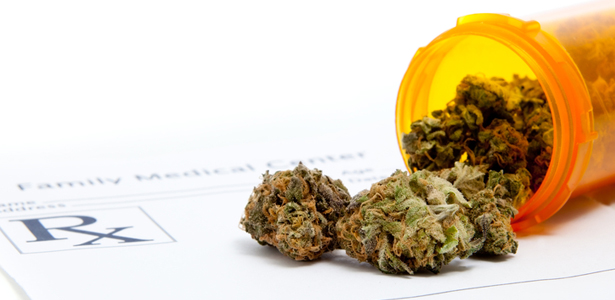
Extremely low levels of the compound in marijuana known as delta-9-tetrahydrocannabinol, or THC, may slow or halt the progression of Alzheimer’s disease, a recent study from neuroscientists at the University of South Florida shows.
Findings from the experiments, using a cellular model of Alzheimer’s disease, were published online ahead of print in the Journal of Alzheimer’s Disease.
Researchers from USF’s Byrd Alzheimer’s Institute showed that extremely low doses of THC reduce the production of amyloid beta, found in a soluble form in most aging brains, and prevent abnormal accumulation of this protein — a process considered one of the pathological hallmarks evident early in the memory-robbing disease. These low concentrations of THC also selectively enhanced mitochondrial function, which is needed to help supply energy, transmit signals, and maintain a healthy brain.
“THC is known to be a potent antioxidant with neuroprotective properties, but this is the first report that the compound directly affects Alzheimer’s pathology by decreasing amyloid beta levels, inhibiting its aggregation, and enhancing mitochondrial function,” said study lead author and USF neuroscientist Chuanhai Cao, PhD.
“Decreased levels of amyloid beta means less aggregation, which may protect against the progression of Alzheimer’s disease,” Dr. Cao explained. “Since THC is a natural and relatively safe amyloid inhibitor, THC or its analogs may help us develop an effective treatment in the future.”
While past studies have suggested that smoking marijuana — especially at a young age — could impair memory later on down the road, the researchers in the new study found that the therapeutic aspects of THC overcame the so-called risks of THC toxicity and memory impairment.
Neel Nabar, a study co-author and MD/PhD candidate, said the findings may prove to be particularly important in the rapidly changing political climate surrounding the debate over medical marijuana.
“While we are still far from a consensus, this study indicates that THC and THC-related compounds may be of therapeutic value in Alzheimer’s disease,” Nabar said. “Are we advocating that people use illicit drugs to prevent the disease? No. It’s important to keep in mind that just because a drug may be effective doesn’t mean it can be safely used by anyone. However, these findings may lead to the development of related compounds that are safe, legal, and useful in the treatment of Alzheimer’s disease.”
Dr. Cao’s laboratory at the Byrd Alzheimer’s Institute is currently investigating the effects of a drug cocktail that includes THC and caffeine, as well as other natural compounds, in a cellular model of Alzheimer’s disease. They will advance to a genetically-engineered mouse model of Alzheimer’s shortly.
“The dose and target population are critically important for any drug, so careful monitoring and control of drug levels in the blood and system are very important for therapeutic use, especially for a compound such as THC,” Dr. Cao added.
Earlier studies found that activating the brain’s cannabinoid system through THC had antioxidant properties, cleaning the brain out in a way by removing damaged cells and improving mitochondria activities. Overall, the researchers concluded that marijuana — certain compounds, distributed in particular levels, at least — could have an overall positive effect on the brain.
“[C]annabinoid system activity is neuroprotective,” Andras Bilkei-Gorzo of the Institute of Molecular Psychiatry at the University of Bonn, who authored a 2012 study about marijuana reducing brain aging, wrote in a commentary. Boosting this cannabinoid system in the brain could possibly “be a promising strategy for slowing down the progression of brain aging and for alleviating the symptoms of neurodegenerative disorders.”
